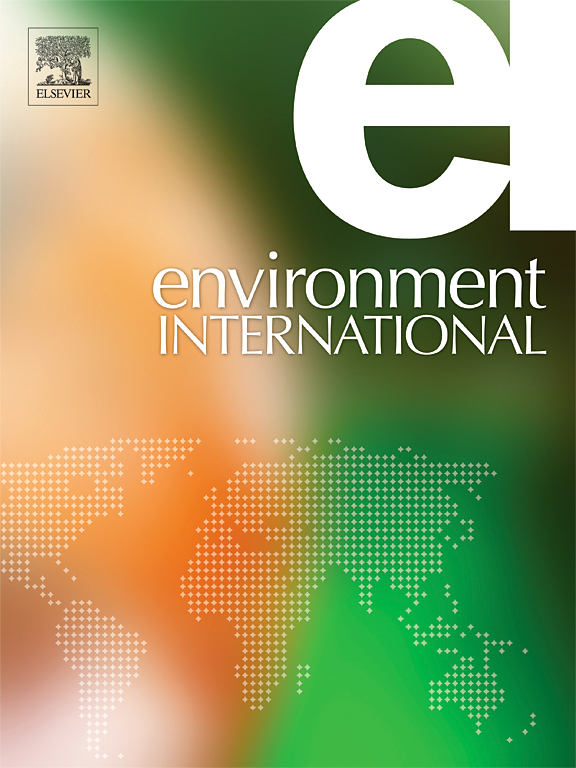合成内生细菌群落减少蔬菜中多环芳烃积累的潜在机制
IF 10.3
1区 环境科学与生态学
Q1 ENVIRONMENTAL SCIENCES
引用次数: 0
摘要
功能性内生细菌群落能有效降解多环芳烃(PAHs),从而减少其在受污染地区种植的蔬菜中的积累。然而,这种降解作用的生物机制仍不清楚。在本研究中,我们分析了功能性内生细菌群落 m5 的不同定殖方法在减少蔬菜中多环芳烃方面的功效,尤其侧重于叶片涂刷法。结果表明,各种定植方法都能有效减少蔬菜中的多环芳烃,其中叶面喷漆法被证明是一种经济有效的方法。与未接种的对照组相比,叶片涂刷法可使苋菜食用部分的多环芳烃含量降低了 40.63%。高通量测序和定量 PCR 发现,叶片涂色改变了细菌群落结构和细菌网络的关键成分,增强了细菌的合作能力。定殖20天后,蔬菜中phe和nidA基因的丰度显著增加,是未接种对照的几十倍到几百倍,从而促进了蔬菜中多环芳烃的降解。这项研究加深了我们对内生细菌群落减少蔬菜中多环芳烃的生物机制的了解。本文章由计算机程序翻译,如有差异,请以英文原文为准。
Potential mechanisms of synthetic endophytic bacterial community to reduce PAHs accumulation in vegetables
The functional endophytic bacterial community can effectively degrade polycyclic aromatic hydrocarbons (PAHs), thereby reducing their accumulation in vegetables grown on contaminated sites. However, the biological mechanisms underlying this reduction remain unclear. In this study, we analyzed the efficacy of different colonization methods of the functional endophytic bacterial community m5 in reducing PAHs in vegetables, with a particular focus on the leaf painting method. The results demonstrated that various colonization methods effectively reduced PAHs in vegetables, with leaf painting proving to be a cost-effective and efficient approach. Compared to the non-inoculated control, PAH content in the edible parts of amaranth was reduced by 40.63 % using the leaf painting method. High-throughput sequencing and quantitative PCR revealed that leaf painting altered the bacterial community structure and key components of the bacterial network, enhancing bacterial cooperation. After 20 days of colonization, the abundance of phe and nidA genes in vegetables increased significantly, by tens to hundreds of times, compared to uninoculated controls, thereby promoting the degradation of PAHs in vegetables. This study enhances our understanding of the biological mechanisms by which endophytic bacterial communities reduce PAHs in vegetables.
求助全文
通过发布文献求助,成功后即可免费获取论文全文。
去求助
来源期刊

Environment International
环境科学-环境科学
CiteScore
21.90
自引率
3.40%
发文量
734
审稿时长
2.8 months
期刊介绍:
Environmental Health publishes manuscripts focusing on critical aspects of environmental and occupational medicine, including studies in toxicology and epidemiology, to illuminate the human health implications of exposure to environmental hazards. The journal adopts an open-access model and practices open peer review.
It caters to scientists and practitioners across all environmental science domains, directly or indirectly impacting human health and well-being. With a commitment to enhancing the prevention of environmentally-related health risks, Environmental Health serves as a public health journal for the community and scientists engaged in matters of public health significance concerning the environment.
 求助内容:
求助内容: 应助结果提醒方式:
应助结果提醒方式:


